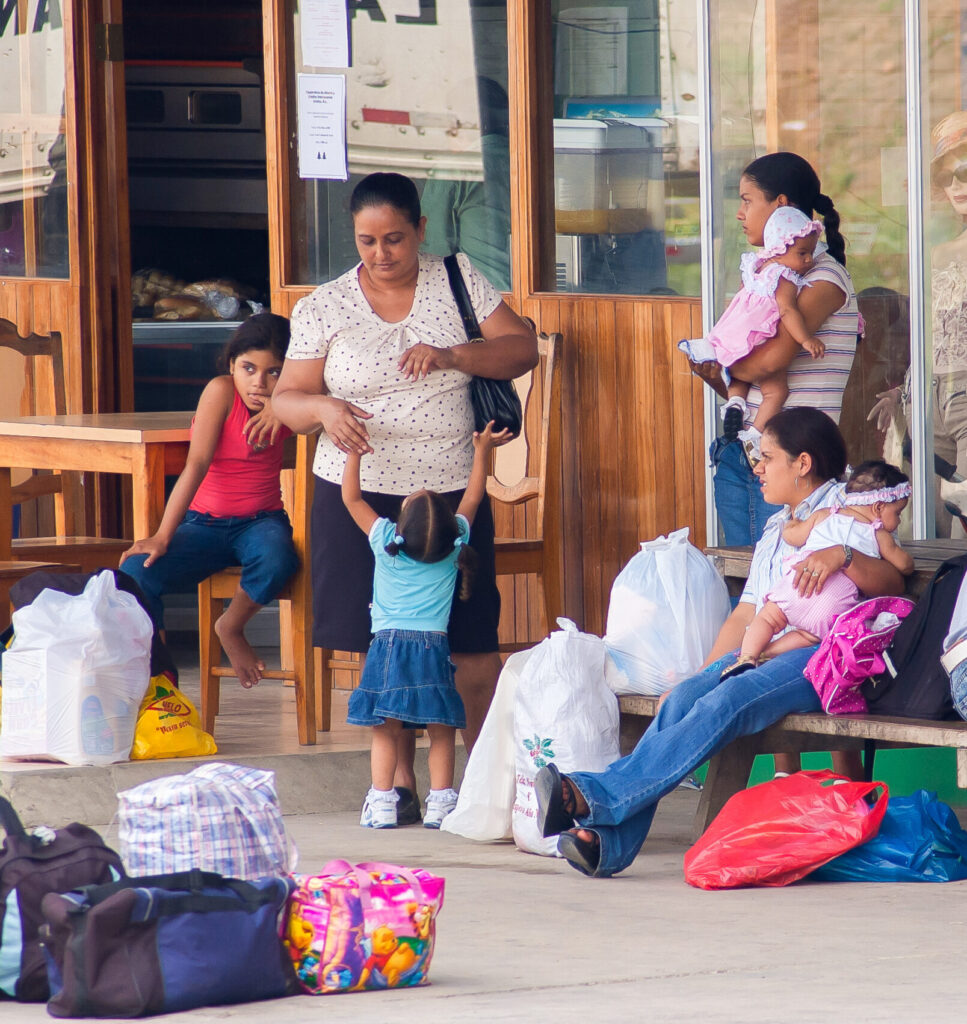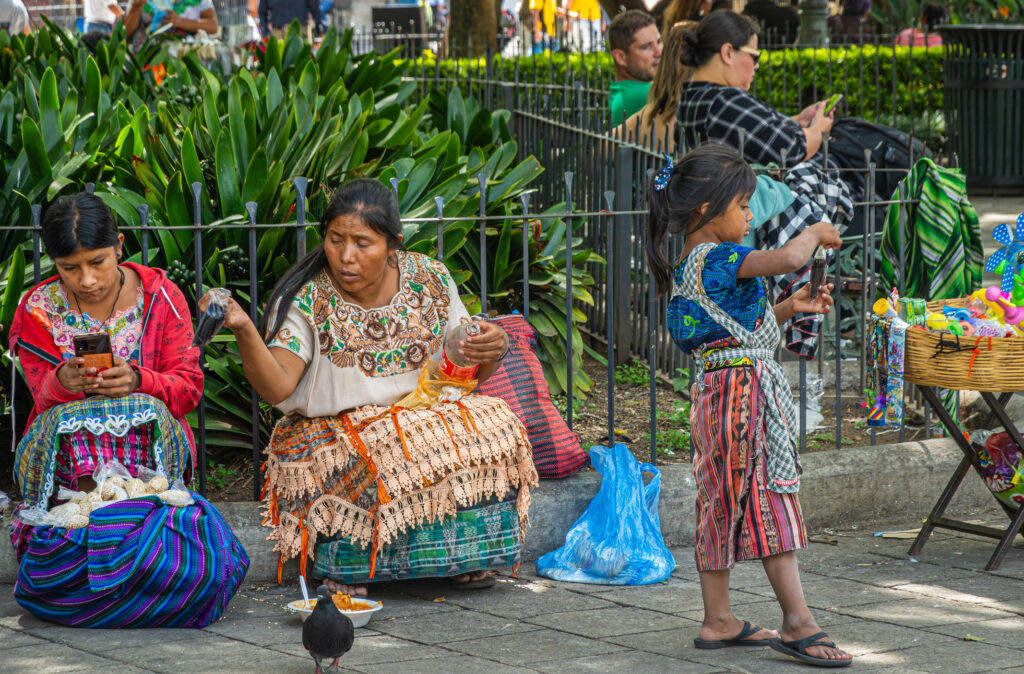
Series
CFI Advisory Council Member Rosita Najmi has over 20 years of experience in global development, but she attributes her initial connection to financial inclusion to a personal relationship with poverty as a young refugee who came to the United States from Iran with her family.
Originally a field researcher and social entrepreneur, she has also worked across leading international NGOs to advocate for and employ financial services as a tool to empower and improve the lives of low-income people. As a development economist, she helped stand up the first World Bank global practice for financial inclusion. She then transitioned from operations and development policy functions to funder roles — across impact investing, private philanthropy, and now corporate philanthropy. She is a long-time and devoted champion of gender equality, and her contributions include efforts to advance women’s economic empowerment, including the creation and funding of FinEquity and the Data2X Women’s Financial Inclusion Data Partnership. Currently, Rosita serves as a VP of Social Impact at The UPS Foundation, leading strategy, innovation, grantmaking, and measurement, evaluation, and learning (MEL).
As Rosita reflects on her career, she contemplates the meaningful way that her professional roles, and the specific order in which they happened, have enabled her to optimize her impact. As a CFI Advisory Council member since January 2022, she continues to work toward achieving a goal that her late mother regularly encouraged: “Make your life count!”
1. How did you become involved in inclusive finance and what are you working on now?
RN: My connection to financial inclusion is rooted in a personal relationship with poverty. My family — my late mom, three older siblings, and I — came to the United States from Iran as refugees. We brought three suitcases and $3,000 cash, which my then 15-year-old brother carried in his pockets.
I remember well the judgment and discrimination my family and I faced while living in poverty. I grew up in Tennessee, where there was racism and judgment of families who received government welfare, such as food stamps, which mine did. At that time, food stamps were pieces of paper so it was easy for others to notice when my mom used them at the grocery store.
As early as elementary school, I used to help my mother with her bank account and finances. I couldn’t even reach the counter to see the bank teller! But, because of her accent and English being her second language, my mother was not confident, and I would often help communicate with the bank teller on her behalf.
This personal journey with access to financial services and resources has shaped my priorities and instilled a strong desire to help and empower others, with an emphasis on designing for dignity. I have worked in social and economic development for many years, but my top priority has been to transform financial services into a tool to empower low-income and marginalized people.
This personal journey with access to financial services and resources has shaped my priorities and instilled a strong desire to help and empower others, with an emphasis on designing for dignity.
I started my career as a field researcher, social entrepreneur, and founder of an international NGO. These experiences were the best education I could have asked for — more than my formal education — to understand families’ financial hardships around the world and the impossible choices that so many are forced to make every day. When I joined the World Bank as a development economist, I helped develop the Bank’s first global practice for financial inclusion. We created the support template to help countries develop and measure progress against national financial inclusion strategies. After that, and for over a decade, I have been a funder of different types of capital, from impact investing to private and corporate philanthropy.
Currently, I oversee grantmaking, strategy, innovation, and measurement, evaluation, and learning (MEL) at The UPS Foundation. One of the four focus areas is equity and economic empowerment, which includes a focus on women. Whether in accessing finance or moving their goods to markets or across borders, women face unique challenges because of social and cultural norms, limits on mobility and agency, and time poverty, among other barriers. We seek to do our part to remove such barriers. UPS’ equity and economic empowerment portfolio also includes career and college readiness for youth, entrepreneurship, and workforce development.
2. What key lessons have you learned from past work experiences?
RN: While funding the Better than Cash Alliance (BTCA) during my tenures at both the Omidyar Network and the Bill & Melinda Gates Foundation, I deepened my understanding of the potential of advocacy. Advocacy is a skill set — a combination of art and science — that can transform lives, change policies, and move resources to support underserved or marginalized communities. I also learned how blended finance can play a vital role in global sustainable development. I believe we need varying types of capital — a mixed capital stack — for scale and long-lasting impact.
Advocacy is a skill set — a combination of art and science — that can transform lives, change policies, and move resources to support underserved or marginalized communities.
Furthermore, learning and sharing experiences through coalitions and alliances is much more efficient and effective than doing it alone. I am a collaborator and connector and have worked on building and supporting multiple global coalitions and alliances around different topics like impact investing, women’s economic empowerment, tax policy and administration, and climate equity and resilience.
Finally, because of my tenure at Mercy Corps, I became a strong believer in market-based approaches that lead to sustainable development and empowerment. In contrast to a beneficiary-focused approach, market-oriented models position populations living in poverty as consumers, producers, employees, or entrepreneurs. Market-based approaches use business models and work to catalyze markets to solve development and humanitarian challenges more sustainably and at scale than time and resource-bound interventions.
3. If you weren’t in your current professional role, what would you be doing right now?
RN: I would spend more time advocating to end human rights violations in Iran, especially in support of women and girls and members of the religion the Bahá’í Faith.
4. What unique expertise do you bring to CFI’s Advisory Council?
RN: I strive to bring the following to CFI: (i) my network so I can be a connector for CFI’s applied research; (ii) strategic thinking, especially around creating intersectional outcomes; and (iii) personal experience and passion for designing for dignity and empowerment.
If I had the chance to re-design my career, I would take the same path. The order of my experiences was meaningful; I am a better funder, because I was a grantee first, and I can be an innovator, because I worked in the field, in operations, and on the front lines. I aim to bring my experience wearing these diverse hats to CFI’s Advisory Council.
5. In one word, what is the current state of financial inclusion today?
RN: Transitioning. Many people and organizations have worked hard to build the case for why the sector needs to go beyond solely advancing access. It’s now understood that we cannot declare victory simply when someone opens a bank account and that instead, the customer must build towards resilience to escape poverty and stay out of poverty. Digital financial inclusion can be a tool for both empowerment and equity in development, and it supports government accountability and fiscal transparency, particularly for government subsidies to its citizens and tax administration. Lastly, when I think about the future, especially in terms of climate shocks and war, the need for humanitarian response is increasing at a rapid pace and scale. We must swiftly integrate digital payments into humanitarian responses.
6. What can we learn from fintech that can be applied to financial inclusion?
RN: Friction management is important. Typically, the goal of payments, especially for access to credit and savings, is to be as frictionless as possible. However, I believe there is a role for friction when it comes to credit. For example, providing notifications or other reminders highlighting an outstanding debt balance would be advantageous when a customer has multiple loans or payment plans. This approach serves the dual purpose of protecting consumers’ interests and empowering consumers to stay informed about their financial obligations. In this way, the financial provider is signaling its focus on its bottom line and its commitment to the financial health of its customer.
On the data side, people are already researching and discovering issues related to data misuse, especially data privacy. Fortunately, new laws are helping, but the financial services industry and development actors could also have proactive strategies for the misuse and missed use of data.
The effectiveness of AI relies on the quality of the data employed. If marginalized groups, such as women or people with disabilities, are invisible in the data, these groups are at serious risk of being left further behind.
There is an abundant amount of data being produced, but unfortunately, not all data is used or used optimally. This underutilization can be because of a fear of breaking the rules, especially around data management and governance. Other times, the barrier can be because skill sets are missing in data science. Nevertheless, like how we developed frameworks to guide countries to develop national strategies for driving and measuring financial inclusion, I think there is a need to develop diagnostics and templates that help governments and financial services providers use data to benefit their customers. For example, financial services providers can use data to measure product equity — showing who is using products and services and to what outcomes. Further, governments, academia, civil society, and development organizations can leverage anonymized and aggregated data sets to triangulate with other data sets for insights, innovations, and consumer protection.
I would like to see more ‘data for good’ strategies in the private sector, which can include disaggregating data by gender, race, and other classifications and considering the quality of data sets that educate artificial intelligence. The effectiveness of AI relies on the quality of the data employed. If marginalized groups, such as women or people with disabilities, are invisible in the data, these groups are at serious risk of being left further behind.
7. What are the most crucial issues in inclusive finance that we should prioritize over the next five years?
RN: We are seven years from the 2030 Sustainable Development Goals (SDG) deadline, and the COVID pandemic eliminated years of progress. We must compensate for this loss by pursuing interventions with intersectional outcomes. Therefore, the issues I would prioritize in the next five years include:
- The misuse and missed use of data
- Climate risks related to food security, a just transition, adaptation, and resilience
- Gender equality issues related to health and education outcomes, and the social and cultural norms that thwart the full contributions of women and girls
Authors










